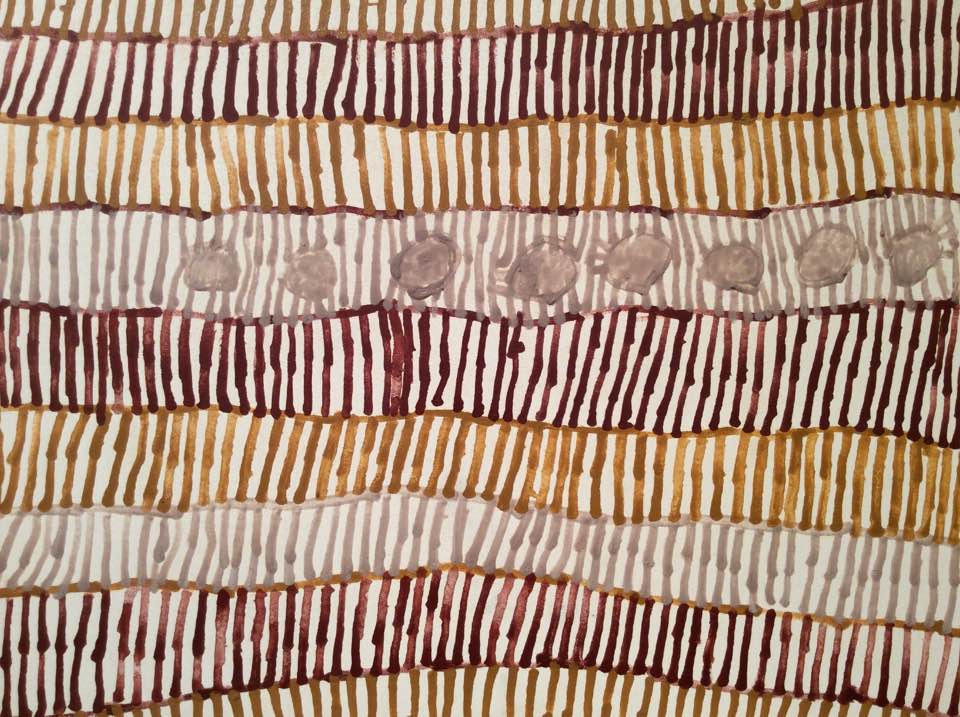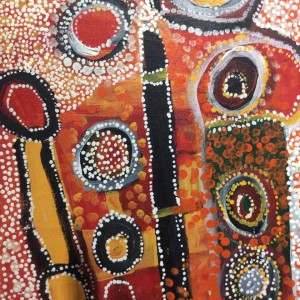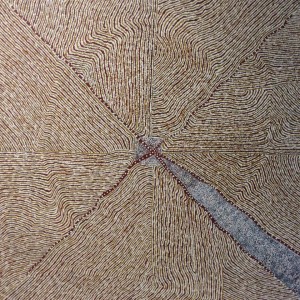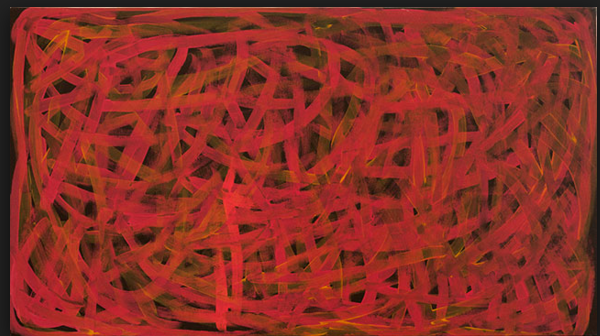by Sonia Corrêa
Last week, in Rio, I visited an exhibition of drawings, painting, and sculptures produced by persons belonging to the ‘first nations’ of Australia. I was both dazzled and uncomfortable. The discomfort settled immediately when I read the subtitle of the show: ‘contemporary aboriginal art from Australia‘. I am well aware that this is the consecrated terminology used to name the graphical drawings in natural pigments and wooden pieces that, for centuries or perhaps millennia, have been elaborated by the original peoples of the island continent now called Australia. Even so, I can not read these words without feeling disturbed. Firstly, because the connection between the terms ‘contemporary art’ and the cultural and ritual contexts that inspired most of the works shown at the exhibition needs to be interrogated. But also because in this formla the term ‘Australia’ denotes a national identity, supposedly homogeneous, but whose contours were to a large extent drawn at the cost and to the detriment of the human cultures that elaborate the amazing expressions of ‘artwork’ shown at the exhibition. Yet more disturbing, the nomenclature ‘Aboriginal’ that occupies the center of the title is inexorably colonial. Suffice to read the descriptive texts attached to each piece of the show to realize that these ‘artists’ do not recognize themselves as ‘aboriginals’ but rather as Gija, Wuramyianga, Milikapiti, Biripi, Worimi, Maningrida, Wangkajunga, Aliawerre, Warlpiri [1].
I can not recall exactly when I have first heard or read the term ‘Australian Aboriginal’. It was perhaps in the high school classes on ‘universal history’ that portrayed – in large schematic panels full of names and dates – the European colonial expansion as a definitive civilizing process. Or perhaps, I have realized that ‘aboriginal’ existed when reading the highly Eurocentric collection The Youth Treasury that inhabited my bookshelf. Either in one case or the other the narratives that introduced me to the term defined the ‘aboriginals’ – as it also happened with the ‘wild Africans’ from Tarzan’s films and the ‘red skins’ from cowboy movies – as peoples that had been or should be ‘civilized’ (or else eliminated if they resisted to persist in ‘barbarism’). In recovering these memories I realized that, significantly enough, the treatment given to the Brazilian ‘Indians’ in many of these the texts was much more ambivalent or even paradoxical. On the one hand, being ‘savages’ (the texts were very insistent on their pre-colonial cannibalistic practices) they also should be civilized. On the other, ‘our Aboriginals’ were also a source of pride, a constitutive part of the national identity as romantically inscribed in the 19th post-independence literature in the prolific statuary of public squares. And, at least in Brazil, ‘our Indians’ occupied the upper echelons of the hierarchy established in these accounts to fix the relative position of the many ‘others’ crashed by the colonial enterprise. In contrast, the ‘Australian Aboriginals’ were located in the lowest position and usually described as the ‘most primitive of all’. I can even recapture having read texts that stating that they were, in fact, ‘very close to the primates‘.
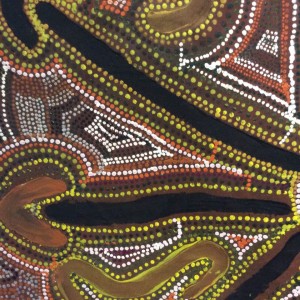 In the 1970s, however, I would re-encounter the original peoples of the Australian Continent radically different narratives: the texts I read and debated in the course of Ethnology, Anthropology and Science of Religion at the Sorbonne, Paris VII, a department that at the time was deeply informed by the critique of ethnocentrism. Not everything we then read was anti-ethnocentric, but this was the perspective that prevailed in the general atmosphere of the course. In the course, the ‘Australian Aboriginal’ were especially prominent in the analyses developed by Bruno Bettelheim in ‘Symbolic Wounds’, which was the textbook of the discipline on ‘psychoanalysis and anthropology’. This particular classroom was a constant battleground because the feminist students did not let pass any word, suggestion or interpretation that would be biased by the patriarchal or phallocentric traces that dominated conventional readings of Freud and other masters of psychoanalysis without screaming.
In the 1970s, however, I would re-encounter the original peoples of the Australian Continent radically different narratives: the texts I read and debated in the course of Ethnology, Anthropology and Science of Religion at the Sorbonne, Paris VII, a department that at the time was deeply informed by the critique of ethnocentrism. Not everything we then read was anti-ethnocentric, but this was the perspective that prevailed in the general atmosphere of the course. In the course, the ‘Australian Aboriginal’ were especially prominent in the analyses developed by Bruno Bettelheim in ‘Symbolic Wounds’, which was the textbook of the discipline on ‘psychoanalysis and anthropology’. This particular classroom was a constant battleground because the feminist students did not let pass any word, suggestion or interpretation that would be biased by the patriarchal or phallocentric traces that dominated conventional readings of Freud and other masters of psychoanalysis without screaming.
In this heated environment, Bettelheim’s descriptions of the sophisticated sexual and body-modifying practices of the ‘first nations’ of Australia were not interpreted as ‘barbarism’, but rather as signs of the complexity of ‘ savage thinking’ (from Levy Strauss’ La pensée sauvage) including in what concern sexual matters. But these practices were also the object of extensive and intense debates. Particularly controversial were the discussions around Bettleheim’s interpretations of the longitudinal incision of the penis – practiced by some of these groups – which opens the skin of male sexual organ, making it similar to a vagina. If I am not wrong, Bettelheim himself claims that this body modification turned upside down the envy of the penis avatar of classical Freudian reading. If I am wrong and this has not been written by Bettelheim, it was certainly said (more than often screamed) by the young feminist warriors entrenched in a corner of the room. It was in the course of these intense conversations, that I began realizing that male and female roles and positions in the social structure – what would later be conceptualized as sex-gender systems—varied across cultures. Furthermore, as these fierce debates around phalluses turned into vaginas unfolded, a number of radical anti-ethnocentric voices correctly interrogated the room if whether we would be attributing to these practices sexual meanings that remained external, colonial, dominant.
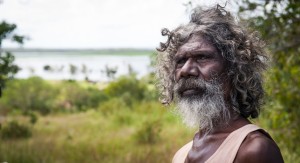 Australian original peoples, therefore, inhabit very significant moments of my intellectual formation. But even so, I would lose sight of them again for many years until the early 1990s when I began interacting more closely with feminists from the Pacific and New Zealand. It was then that realized, too much horror, the scale the colonial effects on the local populations of these many islands and was especially shocked with the dramatic conditions experienced by most of the Australian groups in the late 20th century. Since then, I have seen two exceptional films on the trajectories of exclusion and subalternization of Australian original societies. Stolen Generations (2001) reconstructs the story of ‘mixed’ children who were forcibly taken from their families to be raised by white families at the turn of the 20th century. Charlie’s country is a superb 2015 documentary on the precarious livelihood conditions that continue to prevail today in many ‘stations’ and urban communities in which the native peoples live. It is also a subtle narrative on masculinities.
Australian original peoples, therefore, inhabit very significant moments of my intellectual formation. But even so, I would lose sight of them again for many years until the early 1990s when I began interacting more closely with feminists from the Pacific and New Zealand. It was then that realized, too much horror, the scale the colonial effects on the local populations of these many islands and was especially shocked with the dramatic conditions experienced by most of the Australian groups in the late 20th century. Since then, I have seen two exceptional films on the trajectories of exclusion and subalternization of Australian original societies. Stolen Generations (2001) reconstructs the story of ‘mixed’ children who were forcibly taken from their families to be raised by white families at the turn of the 20th century. Charlie’s country is a superb 2015 documentary on the precarious livelihood conditions that continue to prevail today in many ‘stations’ and urban communities in which the native peoples live. It is also a subtle narrative on masculinities.
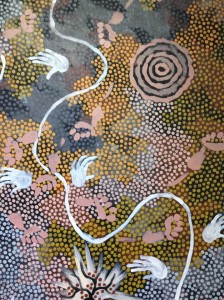 More recently, researching on art and sexuality in postcolonial interstitial spaces (for this section of the SPW website) I have discovered the astonishing descriptive and ritual pointillism and graphics forms drawn by mapans (shamans) but also by a large number of women ‘artists’ belonging to these cultures. This strong feminine presence in the sphere of the sacred practices and aesthetic expressions inevitably evoked the peculiar gender dispositions I had heard of a long time back. I identified images, artists and watched some videos about the processes of drawing and about the places in which these artists live. More importantly, in this explore I learned about the ‘dreaming’ that is the nodal element of this particular ‘art’ expression. When drawing and sculpting ‘dreaming’ the artists belonging to the original people of Australia connect with their natural surroundings, but also with what is beyond immediate reality. They recount stories to keep their mythic narratives alive. They engage their bodies in creative gestures that at the same time pertain to the hardship of survival and the order of the sacred.
More recently, researching on art and sexuality in postcolonial interstitial spaces (for this section of the SPW website) I have discovered the astonishing descriptive and ritual pointillism and graphics forms drawn by mapans (shamans) but also by a large number of women ‘artists’ belonging to these cultures. This strong feminine presence in the sphere of the sacred practices and aesthetic expressions inevitably evoked the peculiar gender dispositions I had heard of a long time back. I identified images, artists and watched some videos about the processes of drawing and about the places in which these artists live. More importantly, in this explore I learned about the ‘dreaming’ that is the nodal element of this particular ‘art’ expression. When drawing and sculpting ‘dreaming’ the artists belonging to the original people of Australia connect with their natural surroundings, but also with what is beyond immediate reality. They recount stories to keep their mythic narratives alive. They engage their bodies in creative gestures that at the same time pertain to the hardship of survival and the order of the sacred.
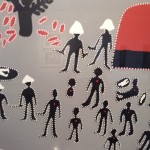 I have moved through the Rio exhibition immersed in contradictory feelings. On the one hand, I could not get rid of the strong colonial specters roaming in the rooms. If nothing else because they are barely and crudely portrayed in two of the exhibited works. Queenie McKenzie‘s painting the Horso Creek Massacre recaptures a brutal episode of ‘civilizing’ barbarism: in 1880 a white police officer killed men, women and children in the Kimberley region because Queenie’s father had killed a bull from a white settler.
I have moved through the Rio exhibition immersed in contradictory feelings. On the one hand, I could not get rid of the strong colonial specters roaming in the rooms. If nothing else because they are barely and crudely portrayed in two of the exhibited works. Queenie McKenzie‘s painting the Horso Creek Massacre recaptures a brutal episode of ‘civilizing’ barbarism: in 1880 a white police officer killed men, women and children in the Kimberley region because Queenie’s father had killed a bull from a white settler.
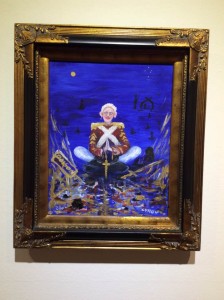 Even tougher, the British Narcissistic Soldier was painted by Gordon Syron in the prison cell where he was serving a life sentence for killing the adopted son of an uncle who had stolen his father’s land. He began painting while in prison and after his sentence was suspended after ten years he deeply engaged in struggles for his people rights, in particular in regard to the scale and arbitrariness of incarceration. The Soldier painted by Syron gazed into a poisoned water hole and this records the practice extensively used by the White settlers to dislodge the native peoples from their territories and occupy them with livestock.
Even tougher, the British Narcissistic Soldier was painted by Gordon Syron in the prison cell where he was serving a life sentence for killing the adopted son of an uncle who had stolen his father’s land. He began painting while in prison and after his sentence was suspended after ten years he deeply engaged in struggles for his people rights, in particular in regard to the scale and arbitrariness of incarceration. The Soldier painted by Syron gazed into a poisoned water hole and this records the practice extensively used by the White settlers to dislodge the native peoples from their territories and occupy them with livestock.
Yet, on the other hand, I could not resist the fascination either. I was dazzled by the simplicity of Universe of Rover Thomas and of the Salt at Mina Mina of Dorothy Napangardi. Lily Nungaray Hargraves‘ Dreaming of Women inevitably took me back to the heated debates of my 1970 class on anthropology and psychoanalysis.
And, I went back a number of times to look closely at the unusual “dreamings” of the Wild Dog drawn by the phenomenal Clifford Possum Tjlapaltjarri (above), of the Thorny Devil of Kathleen Petyarre, of the Leaf of Bush by the Abie Loy Kemarre and at the chromatic explosion of Eye of Water of the mapan (shaman) Wimmitji Tjanpangarti.
Above all, I was completely fascinated by the work and life trajectory of Emily Kame Kngwarreye. Emily was born in the Anmatyerre group in 1910 and died in 1996. She lived in a station called Utopia, a name that is possibly a corruption of the local word Uturupa meaning the ‘great hill of sand’. Yet the name retains a political connotation because Utopia is one of the few autonomous communities of the original peoples that emerged from fierce struggles for land rights. Emily began to do ‘art work’ when she was 68 years old in a batik project that was promoted by state institutions in Utopia. Ten years later she was an internationally recognized ‘artist’ and in her last eight years, she produced more than 3,000 works, all of them inspired by ‘dreaming’ and Alhalkere, the land where she was born and lived. When asked what she painted she always answered: “I paint the whole: the dream of the yam, the devil lizard of the mountain, the grass seeds, the Tingu, the Emu, the Intekwe, the green beans. That’s what I paint: the whole. ”
Her soft chromatic lines and dots in greys and whites, roses and oranges, blue and yellow are astonishing. But there is much more to be said. Emily’s drawings, as well as the work of the many other creators I have encountered at the exhibition enhance a vast maze questions and reflections on the complex and mysterious connections between ‘dreaming’ (or ‘art’), precariousness, subalternity and the limits and possibilities of life worth living. Precariousness and beauty as inspiration for critical thinking.
Images
- Pintura corporal para a cerimônia Pukamani, by Freda Warlipini
- The Dreaming of Women by Lily Nungaray Hargraves
- Charlie (still from the movie)
- The Dreaming of the Dingo (Wild Dog) by Clifford Possum Tjlapaltjarri
- The Horde Creek Massacre, by Queenie McKenzie
- The British Narcissistic Soldier, by Gordon Syron
- The Dreaming of the Thorny Devil (Detail), by Kathleen Petyarre
- Water Eye (detail), by Wimmitji Tjanpangarti
- The Dreaming of Yam, by Emily Kame Kngwarreye
_________________________
Notes
[1] As the ‘Indians’ of the territory called Brazil are Ashanikas, Assurinis, Bororo, Caikang, Caxinauá, Fulniós, Guarani, Guajajara, Kamaiurá, Krenak, Kren-Akarore, Munduruku, Pataxó, Parakanã, Tukano, Baré, Yanomani , Yualapiti, Urubus to mention some of the hundreds of territorial groups and languages of original peoples who survived 500 years of systematic destruction and explanation in the vast lands now called Brazil. [2] Charlie’s Country can be watched on Youtube
